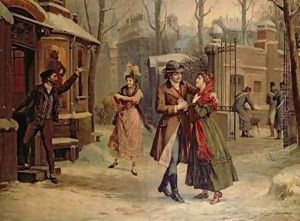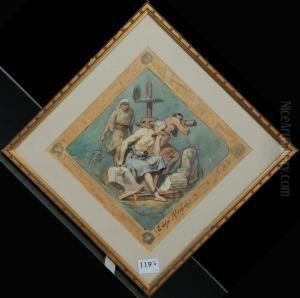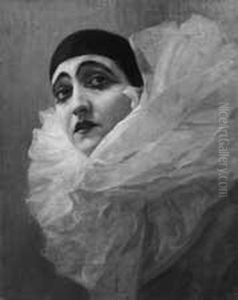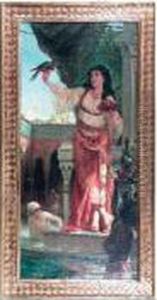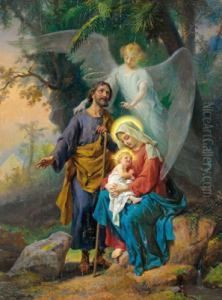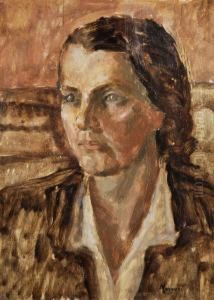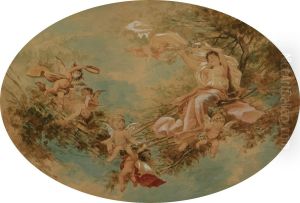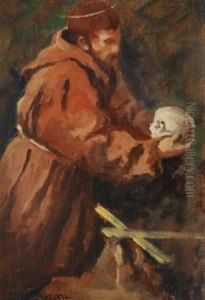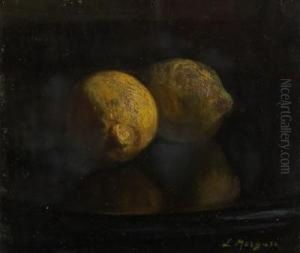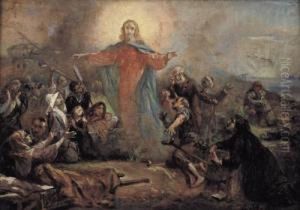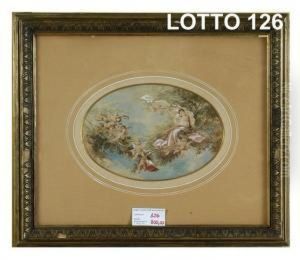Luigi Morgari Paintings
Luigi Morgari was an Italian painter born in Turin, Italy, in 1857. Coming from a family with a rich artistic heritage, Luigi was destined to follow in the footsteps of his forebears. His father, Paolo Emilio Morgari, and his uncle, Rodolfo Morgari, were both accomplished painters, which greatly influenced Luigi's early exposure to and interest in the arts.
Luigi Morgari's education in art began under the guidance of his father and uncle, and he further honed his skills at the Albertina Academy in Turin. Morgari's work is primarily known for its religious themes, a genre that was particularly appreciated in Italy during his lifetime. He specialized in frescoes and oil paintings, imbuing his works with a spiritual depth and a keen attention to detail that resonated with the devout and art enthusiasts alike.
Throughout his career, Luigi Morgari received numerous commissions for churches and sacred spaces across Italy. His ability to blend biblical narratives with the stylistic nuances of the late 19th and early 20th centuries allowed his work to stand out. Among his notable works are the frescoes in the Sanctuary of Vicoforte and the Church of San Filippo in Turin. These pieces not only demonstrate his mastery of the fresco technique but also his capacity to convey divine messages through art.
Luigi Morgari's contribution to religious art in Italy extends beyond his individual creations. He was part of a larger movement that sought to revive and reinterpret religious imagery in a contemporary context. His dedication to his craft and his faith garnered him respect and admiration from both his contemporaries and future generations of artists.
Luigi Morgari passed away in 1935, leaving behind a legacy that has continued to inspire and influence the world of religious art. His works remain a testament to the enduring power of faith expressed through artistic creativity.
